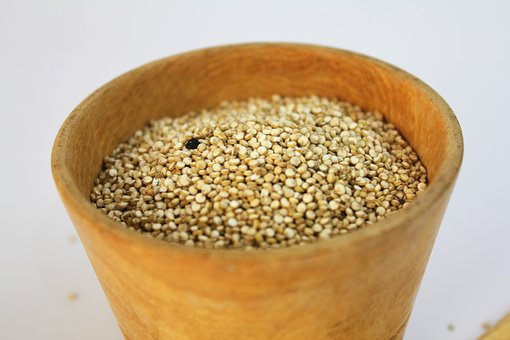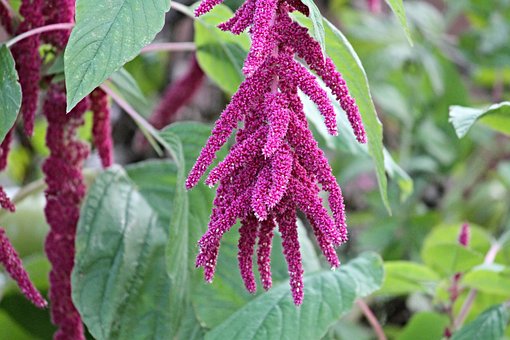What Is Amaranth?
Like rice, corn, quinoa, and millet, amaranth contains no gluten and is considered a whole food, unprocessed, so it is not like white rice or refined wheat. The amaranth family also includes beets, chard, and spinach. When it comes to quinoa vs amaranth — quinoa has a richly deserved reputation as a nutritional powerhouse, but amaranth holds its own as well. Quinoa has eight grams of protein per cup and amaranth has nine grams. Quinoa has three grams of iron per cup and amaranth has five grams. Amaranth looks like a sand dune of tiny, pale golden or tan seeds. It can be used both whole and as flour, but amaranth greens are also edible. And you can heat amaranth seeds, turning it into puffed amaranth — a crispy, nutty snack like popcorn. Raw amaranth can be germinated for sprouts and microgreens.
Amaranth is native to Central and South America, where they traditionally served as staple crops for the Incan, Mayan, and Aztec civilizations. The Aztec made religious offerings not just of the seeds themselves, but also of sculptures of their deities made from honey and amaranth dough. It was sacred to them. Ethiopians use the seeds to make an unleavened bread called kita, an alcoholic beverage called tella, and fermented porridge known as borde, which nourishes new mothers and their babies. Amaranth also features in Indian (where it’s referred to as rajgira), Vietnamese, and Mexican cuisine, including the calaveras or “skulls” with raisin eyes and peanut noses traditionally eaten in Dia de los Muertos (Day of the Dead) celebrations.
Amaranth is a rich source of the essential amino acid lysine, which can sometimes be challenging to get enough of. Symptoms of lysine deficiency can include frequent cold sores, high blood pressure, hair loss, and fatigue, so it’s a good nutrient to make friends with. In fact, amaranth is a complete protein, and has bragging rights for containing adequate amounts of all 9 essential amino acids. Amaranth also has other important nutrients, including fiber, B vitamins and vitamin E. It holds the minerals calcium, zinc, iron, magnesium, phosphorus, and manganese that the plant extracts from the soil.
The simplest way to cook amaranth seeds is to simmer them in liquid, such as water or vegetable broth, like you would cook rice or quinoa. Amaranth cooks relatively quickly (roughly 20 minutes simmering). For a dry pilaf, add 1.5 cups of water to every cup of amaranth. Add savory ingredients like onions and garlic, mushrooms, and chopped veggies for a tasty and filling amaranth side dish. For a wetter cereal or amaranth porridge, use 2.5 cups of water per cup of amaranth. Season it like oatmeal, with dried, fresh, or frozen fruit, cinnamon, raw nuts, and seeds. My favorite way to eat it is with butter and maple syrup on a cold day.
Have you cooked amaranth? What is your opinion about its flavor? I want to hear from you!
Blessings,
KJ Landis
SuperiorSelf channel on YouTube
KJ Landis on LinkedIn
superiorself on Instagram and Twitter
Superior Self with KJ Landis on Facebook




 RSS Feed
RSS Feed